
This is a definitive guide about winter pool chemicals.
In this guide you’ll learn:
So if you’re finally ready to understand winter pool chemistry, this guide is for you.
Let’s jump right in.
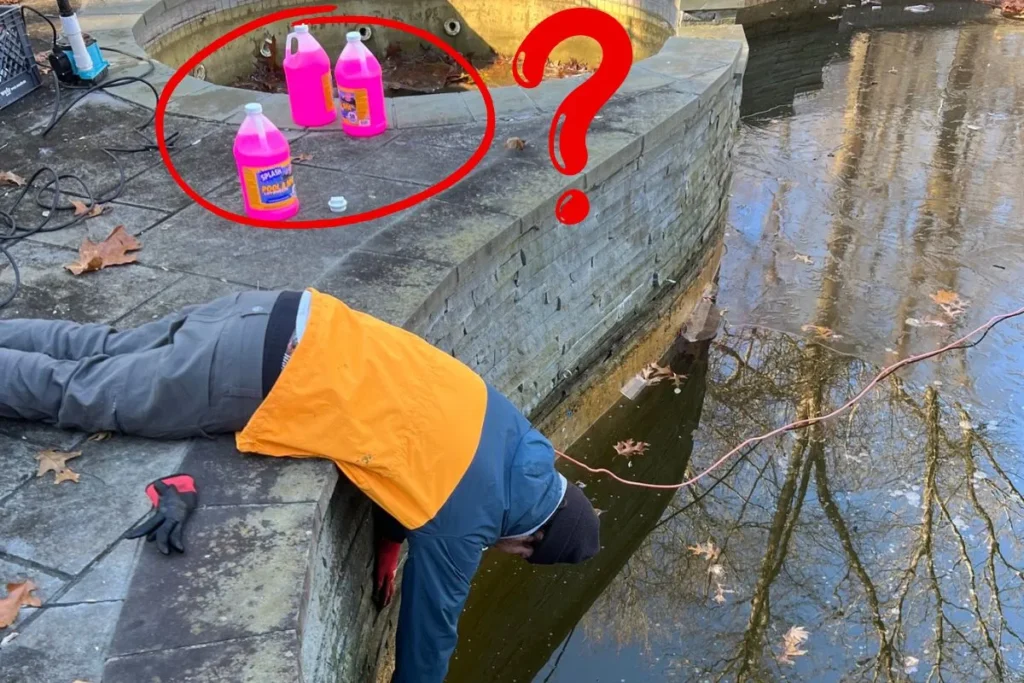
Not surprisingly, yes – you have to add chemicals to the pool in the wintertime.
What often gets overlooked, however, is the reason why we need to add chemicals in the winter differs from in the summer.
Allow us to explain…
In the summer when the pool is being used, our main concerns are keeping the water safe to swim, and keeping the water clear by maximizing chlorine efficiency.
In the winter, our efforts need to switch to focusing primarily on water balance based on the saturation index.
Only once the water is balanced should we then think about chlorination and water clarity.
But why is this the case?
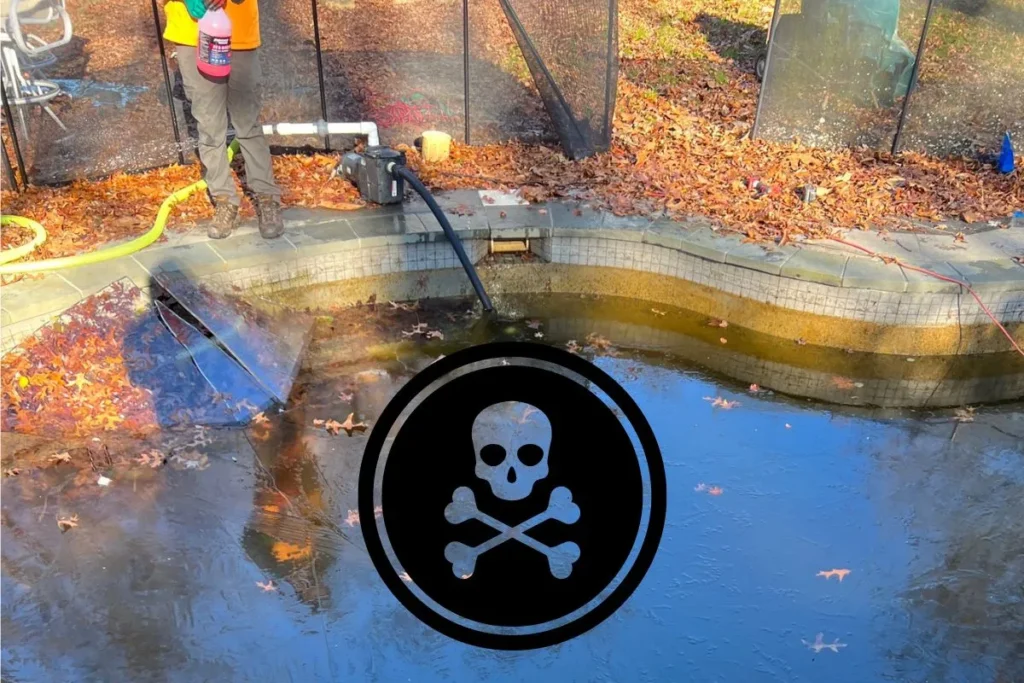
Well, the main time pools are damaged is during the winter – when the pool is not circulating and the water is left standing alone, like a big bowl of corrosive soup.
Imagine the damage done if this bowl of soup contained thousands of gallons of unbalanced water, thirsty for different chemicals that it lacks due to improper chemical maintenance.
On top of the circulation issue, the impact of the cold water alone is huge.
Cold water needs more calcium than warm water in order to maintain proper balance.
Since water is always searching for equilibrium, if the calcium level is off (which it will be unless properly dosed with the correct amount of calcium chloride), it will go searching for that calcium elsewhere – like your pool walls, your liner, and your pool equipment.
It’s a very serious issue and results in the following:
The old industry standards focused more on keeping the chemistry within proper ranges according to summer temperatures only.
But recently, the pool industry became aware of water temperature and its effects on water chemistry.
So yep – chemicals definitely need to be added to the pool.
Let’s read on and learn which chemicals need to be added, and why.
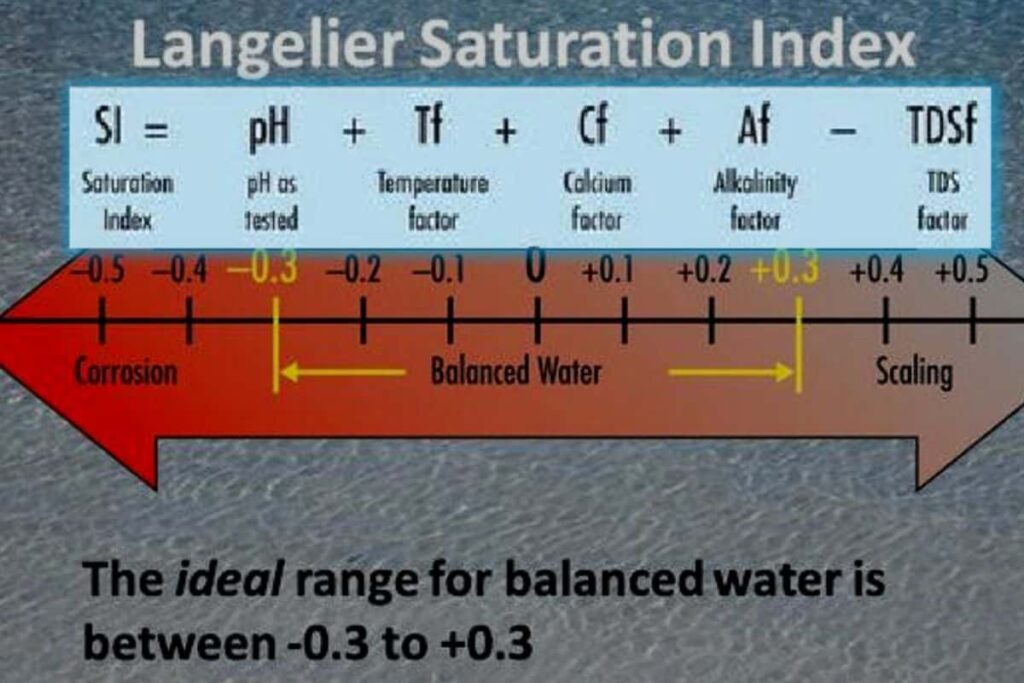
In order to discuss this, we should start at the beginning.
Allow us to introduce you to the Langelier Saturation Index (LSI).
The LSI helps us know how balanced our water is.
It also helps us know what chemicals need to be added to achieve a proper balance.
The LSI accounts for the following:
All of the above factors must be known in order to calculate the LSI.
Thankfully, testing for most of the variables above is standard practice.
Where the industry was lacking, however, was testing the water temperature.
Since the water temperature will be dropping quite drastically over the winter, we need to account for that temperature drop when figuring out the LSI.
So, in summary:
The pool water becomes more corrosive over the winter.
Chemicals (mainly calcium) need to be added to the water over the winter to prevent this corrosion.
Let’s take a look at the target chemistry ranges for different water temperatures:
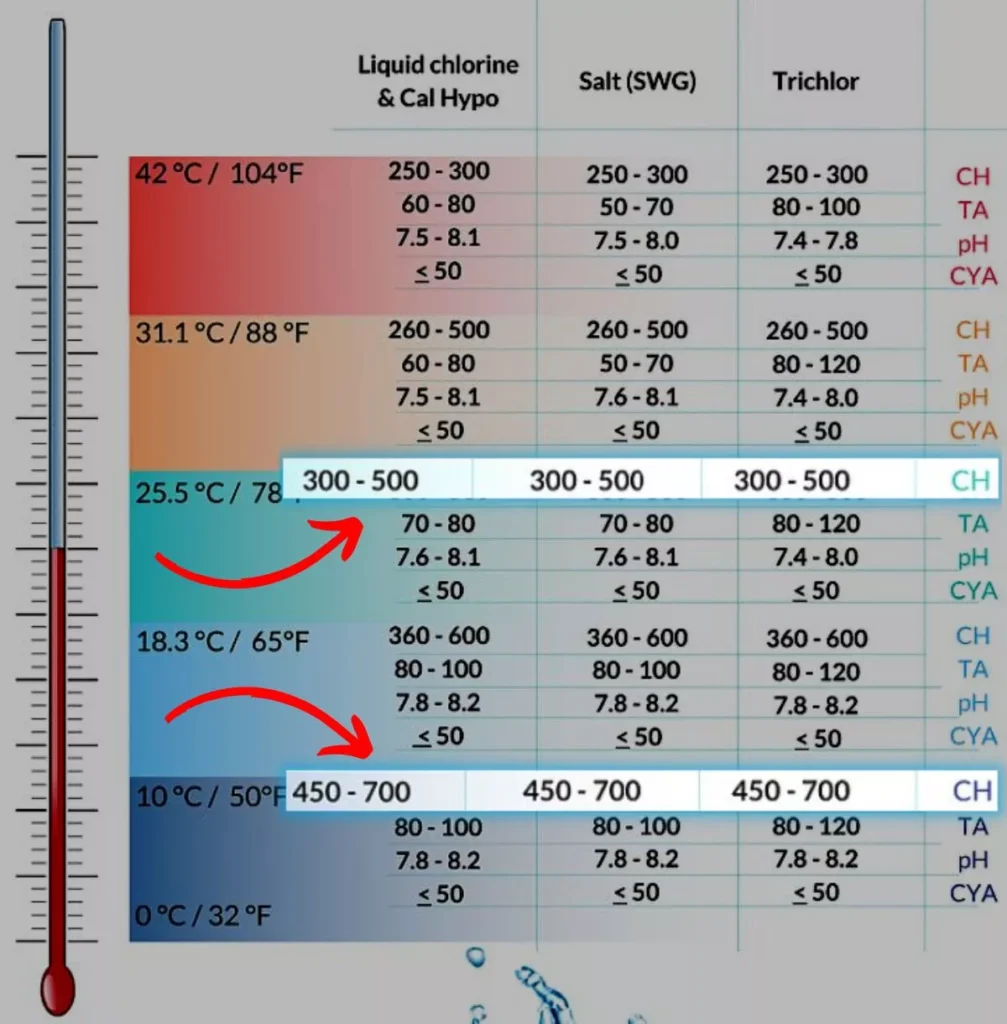
As you can see from the table above, the necessary calcium hardness levels dramatically increase when the temperature drops.
So, the above table can be used for general ranges for your winter pool chemicals.
…but how do we know how much of each chemical to add to get within those ranges!?
All it takes is using a test kit, knowing the volume of water in your pool, and the water temperature.
Simply input all of your readings into an LSI calculator like the one below:
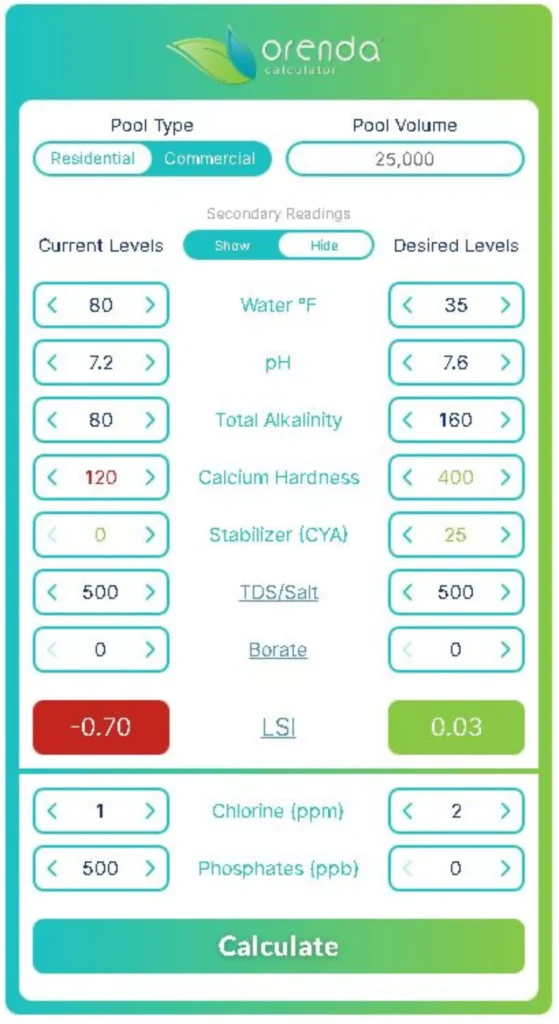
source: https://www.orendatech.com/pool-dosing-calculator
The way to use the calculator is to first change ‘Pool Type’ to residential.
Then, insert your pool volume in gallons.
If you don’t know your volume, use the following handy equation for a good estimate:
Pool volume (gal) = Length x width x average depth x 7.5
For inground pools, you can use an average depth of 6. For above ground pools, use an average depth of 5.
So, let’s say we have a rectangular inground pool, 16 ft. x 32 ft.
We would simply multiply 32 x 16 x 6 x 7.5.
23,040 gallons. That’s a good enough approximation and we should enter that into the calculator in the ‘Pool Volume’ area.
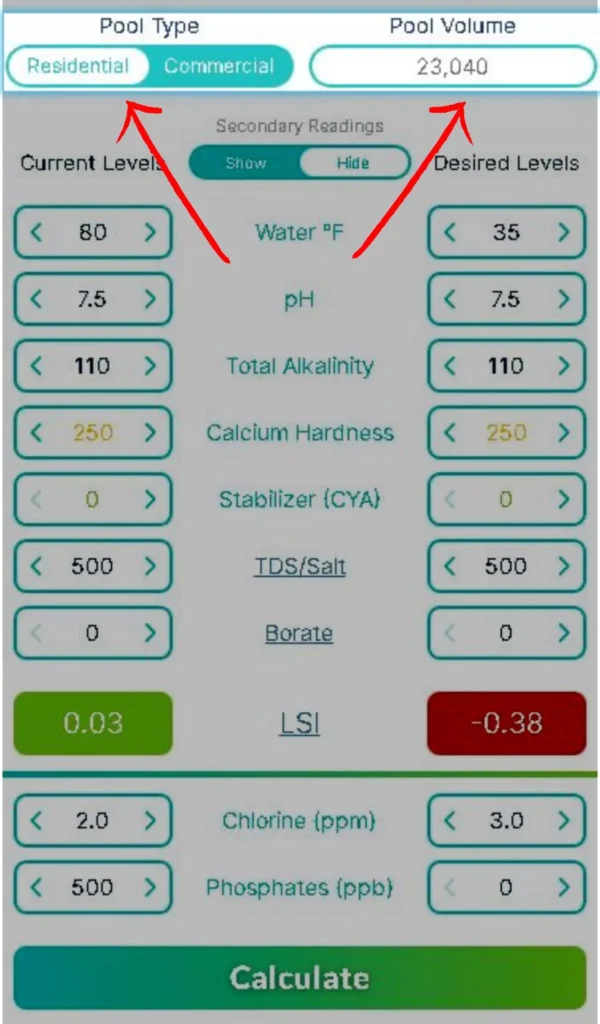
Next, we’ll want to input our current levels and our desired levels.
Current levels will simply be whatever your numbers are when you test.
Desired levels will be what you want the levels to be throughout the winter.
Notice above how the LSI row is in the green for the current level, but when we reduce the water temperature down to 35 in the desired level column, the LSI is red.
Remember – this is because the pool water will become more corrosive over the winter!
We want to adjust the Calcium Hardness up until the right-hand side LSI turns green and reads about .15 or so (0 is ideal, but the water will become more acidic as rainwater, pine needles, leaves, etc. fall into the pool over the winter.)
We suggest targeting a Calcium Hardness of above 500 or so as a start.
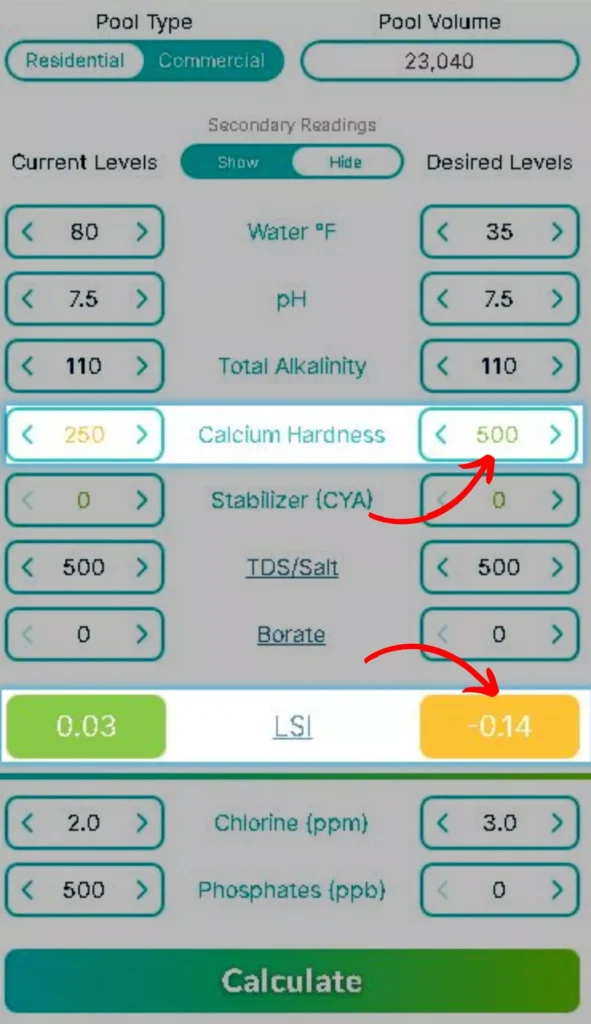
By adjusting the calcium level higher, we got the LSI much closer to where it needed to be.
To get it up to .15 where we want (again, a bit over 0 so that we have a buffer), we can either further increase the calcium, or increase the total alkalinity level a bit (this will both increase our pH level and our LSI).
Take a look at the final inputs we used for Total Alkalinity, Calcium Hardness, and pH:
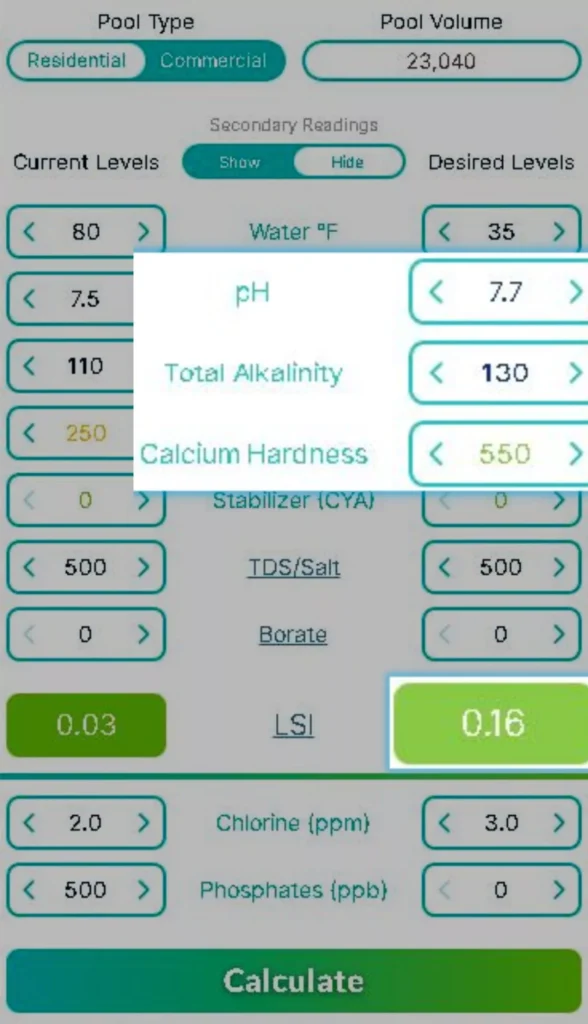
We were able to increase our LSI up to 0.16 – right where we want to be for the winter!
The only thing left to do is click calculate.
This will give us a breakdown of the proper dosages for the chemicals we need to add to achieve our desired winter chemical levels.
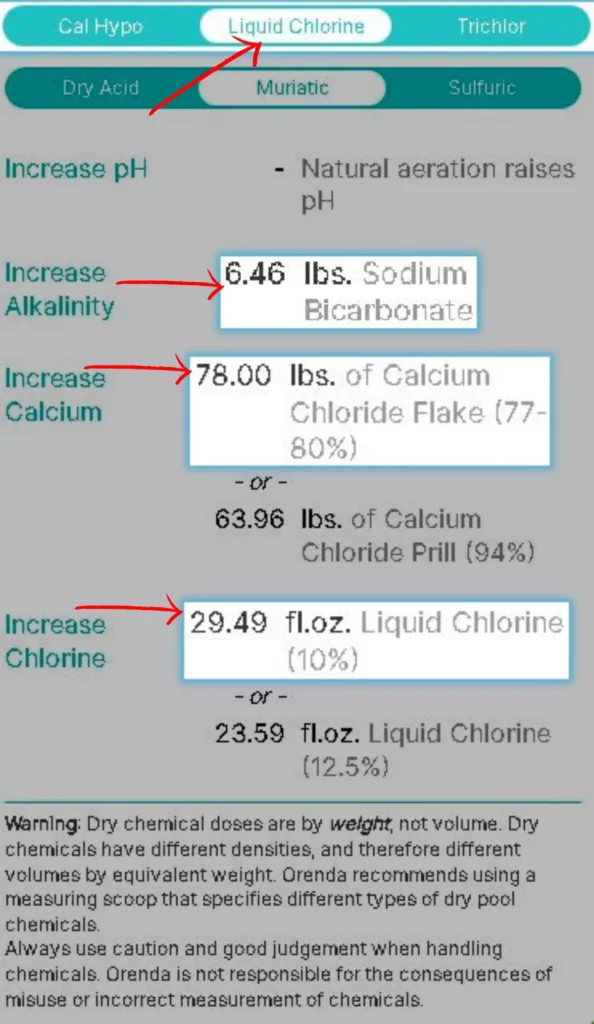
Be sure to change the uppermost tab to the chlorine type that will be added to the pool (we typically add liquid chlorine).
You will see that we should add 6.4 lbs. of Sodium Bicarbonate, 78 lbs. of Calcium Chloride flakes, and 29.49 fl. oz. of Liquid Chlorine.
Whew! We made it!
You now know what type of chemicals need to be added to the pool, and the exact dosage.
We’ve come a long way – well done! But next, let’s make sure we know how to safely add these chemicals without hurting ourselves or our pools!
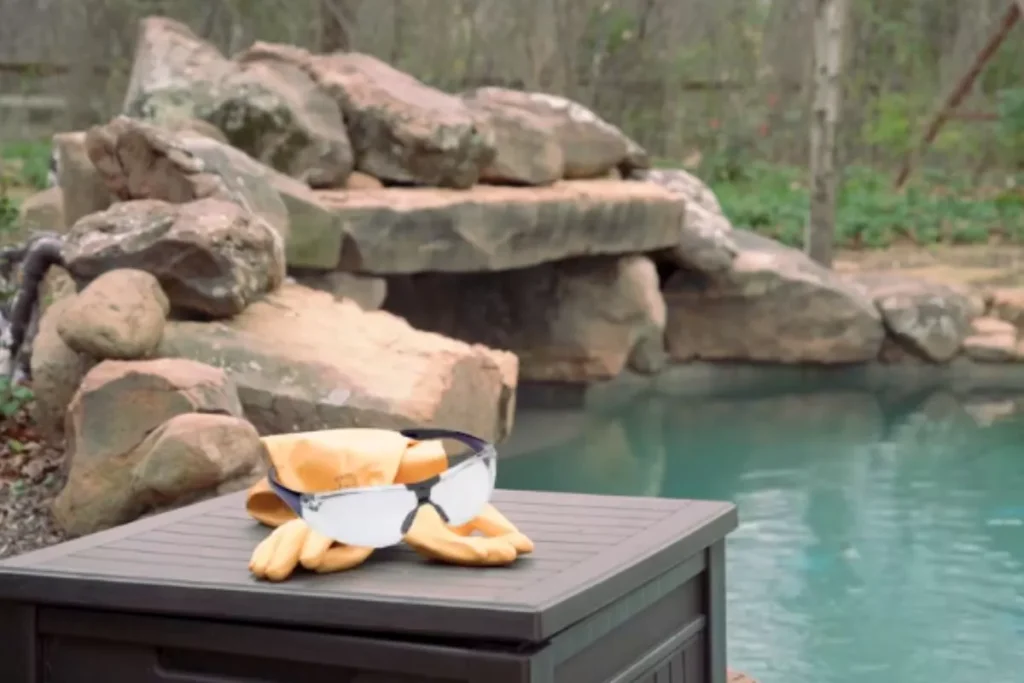
We’ve come so far in our winter pool chemistry journey!
Now, all that’s left is adding the chemicals to the pool.
Since we follow best practices, we recommend following the Safety Data Sheets for each chemical.
You will need the following items:
Adhere to the following steps in order to add your chemicals safely to the pool:
Check out the following video which shows how to safely add calcium to your pool (the same procedure can be used for adding other chemicals as well).
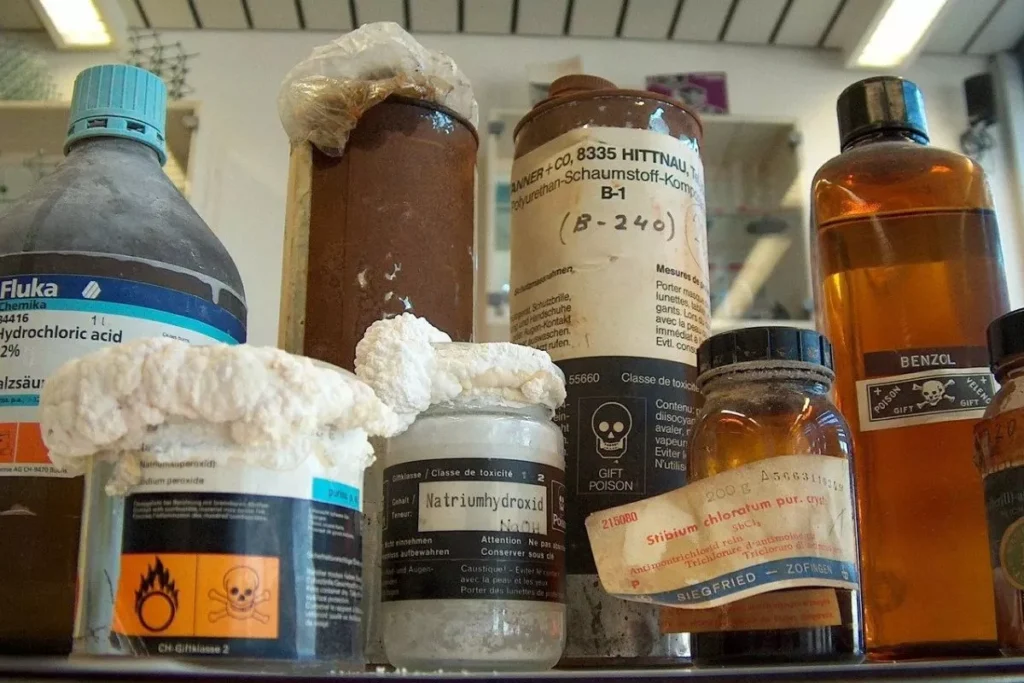
Let’s wrap it up with a few tips for properly storing your chemicals.
As we all know, pool chemicals aren’t the cheapest thing to purchase.
Let’s read on to see how to get the most out of your chemicals by properly storing them in the winter.
Our first recommendation is to keep the chemicals in whatever container you got them in.
If you try to put the chemicals elsewhere, you could accidentally mix them together.
We have even dealt with chemicals in bins that were mislabeled, and this could definitely cause a safety hazard.
Save yourself from potential errors by just leaving the chemicals in the same storage container or bag that you received them in.
Most chemical labels recommend storing them in a cool and dry environment.
Try your best to store your chemicals in a well-ventilated area.
Some of the chemicals can cause corrosion to other objects, so try to keep them away from anything valuable if the ventilation isn’t the greatest.
As for keeping them dry – do your best to keep the chemicals off the ground.
This will help prevent any extra moisture from getting into the chemicals.
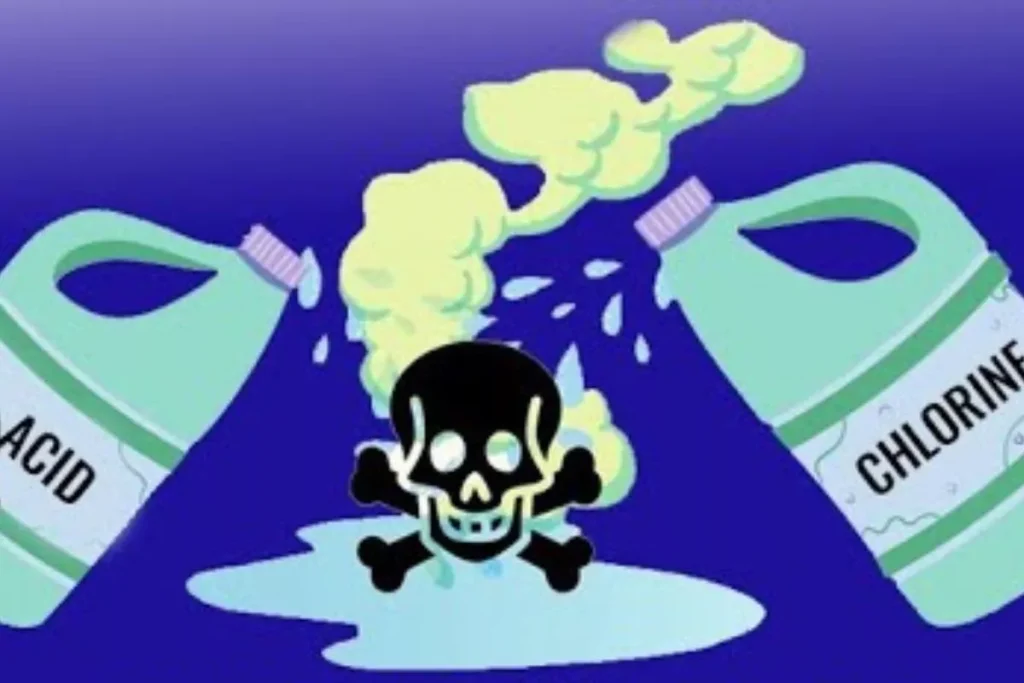
This is very important. DO NOT store chlorine and acid together.
Doing so could be asking for some serious trouble.
Do not store chlorine near anything metal if possible – it will cause much corrosion in time.
ALWAYS read the safety and warning labels of your chemicals.
These labels will tell you how to properly store the chemicals.
This last recommendation is kind of an obvious one, but you wouldn’t believe how many times we go to open a pool in the winter only to find containers or bags not fully closed.
You can kiss your chemicals goodbye if you don’t seal them up properly.
Not only that, if you don’t seal your chemicals fully, they can produce hazardous fumes that are dangerous to your health.
So do your best to make sure that your containers are fully sealed, and any bags of chemicals are closed up tight.
We hope you enjoyed this professional guide about winter pool chemicals.
We’d like to hear from you about any questions you have in regard to properly maintaining your pool this winter.
We’re here whenever you need us, so be sure to give us a text/call at 631-496-1685.
Thanks again and stay warm!

We make pool ownership easy with stress-free maintenance, expert repairs, and cutting-edge tech. From sparkling water to pool automation, we handle every detail so you can relax and enjoy your pool.
© 2025 Paul Romanelli & Son Pool Service.